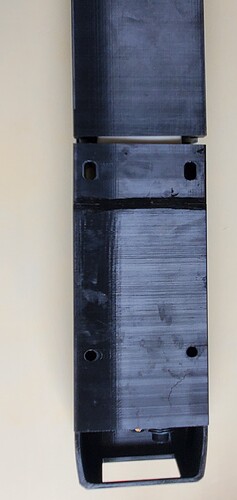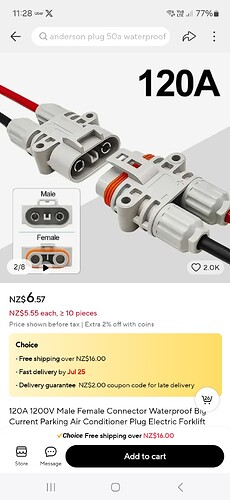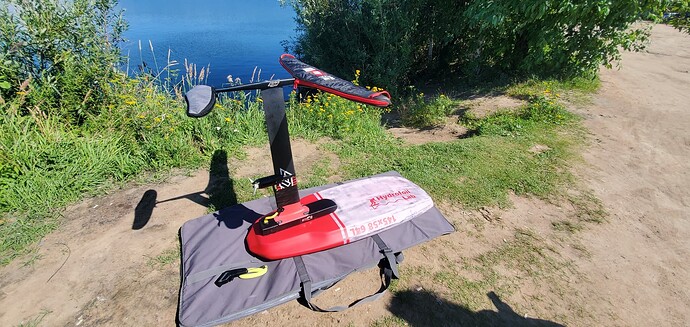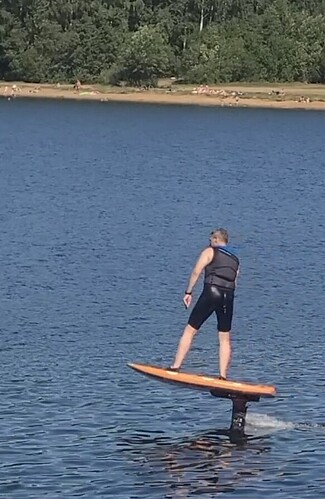Do you mean less likely to let water in? FD are hardly at the cutting edge and very much use components that “just get by” and then continuously offer support and fixes. Its definitely and interesting approach. Is the white silicone?
These connectors are rated at 400 amps, the XT90 is rated at 90 amps continuous. It’s nice to know that you have a margin of safety both in terms of current and in the design as a whole. Silicone is white, yes.
Hope it’ll be satisfying ! I’ve been waiting for months that someone skilled goes in this direction.
How about the connection issues FD has ? I saw your movie running in the bathroom under 30cm freshwater, you use Maytech V3 which is better I suppose. Is it also Ok in saltwater ?
I’m currently using Vx3 Pro. There are no problems with fiberglass boards. Things are not so good with carbon ones. I tried filling the tracks with EVA foam right at the spot, but the padding was loose and the signal ended up being unstable. Now I have filled all the space with XPS strips, I hope the result will be positive, I’m waiting for the weekend to try it out.
And yet, I ride in the bay at the confluence of the river, the salinity is quite low.
You need to run a passive antennae repeater from under the housing to the nose of board.
Can you share a link where to buy these connectors?
Thanks, I’ll try. (Post must be…)
This is a local production
Comparison of new and old housing.
Please don’t judge me for this phase connector. This is not plagiarism, this is cosplay)
If it’s working for them, why reinvent the wheel.
Whats you housing made from? Looks like a single piece and not joined in that pic.
The body actually consists of three parts, two of which are glued together with two-component epoxy UHU, since the print area of my printer is only 250 mm. This is a banal Petg, but now I’m finishing printing the body from a mixture of ABS and polycarbonate.
Brave with a 3D printed case. I don’t quite have that much trust even at 100% infill. I feel I could potentially compress the 3D filament if I pumped a bit hard.
Didn’t work for me (goes to foil.zone)
but this one does 'Power plug EF8 for efoil battery
This connector looks like what Mantafoils is using for their TakeOff assist to connect their 96Wh battery modules to the center module.
I would also prefer die casting or aluminum, but I don’t have those options yet. Right now I am printing 8 walls and 60% infill. There is still glass-filled PET in stock, which can be further heat-treated, but it is very heavy.
An interesting connector, but the length of 121 mm is too long.
Good point!
20 characters
When you get to your final version do you think having a layer of bio-directional carbon over the top of the printed parts would be a viable option instead of using aluminium? Or using the 3D printed parts as the mould?
I’ve never owned a 3d printer and I was thinking for printing to use a combination of minimal infill and filling the void with chopped fibre and epoxy for the housing, then for something like the propellor to cover it in carbon fibre.
Also, what 3D printer do you have? As I am a few days away from purchasing as their is a sale on the 15th and 16th. I would really like to stop procrastinating and make the purchase of a 3D printer. If you purchased again would you still pick the same printer?
I have two printers from Bambu Lab -X1C and P1P. Now I would buy the X1C, the differences are small, but important for me. The bed temperature of X1C is 110 degrees, X1P is 100 degrees, and this causes deformation of the first layers when printing with plastic such as a mixture of ABS and polycarbonate. Overall, both printers are good for their price. As for carbon lamination, this is the last step I would like to take, as I strive for maximum simplicity.




